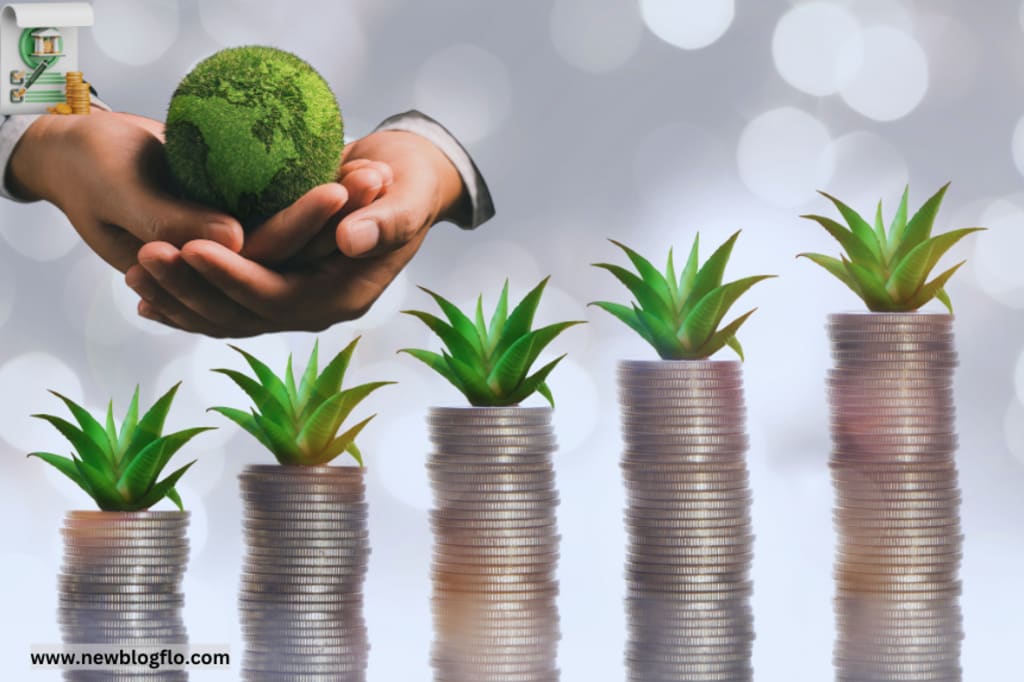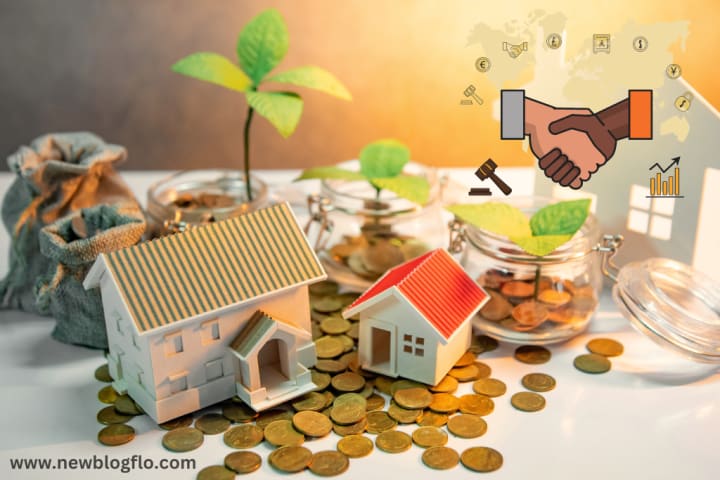Boost Your Wealth with sustainable finance and impact investing
Building a Better Future through Sustainable Finance and Impact Investing

Hey there! Have you heard about the exciting new world of sustainable finance and impact investing? This innovative approach to investing is revolutionizing how people build wealth in a way that also creates positive change.
Sustainable Finance and Impact Investing Specialist
In this post, I'll give you the lowdown on how you can leverage sustainable finance and impact investing to grow your money. We'll cover:
- What exactly are sustainable finance and impact investing?
- Real-world examples of these strategies in action
- Steps you can take to get started on your own sustainable finance and impact investing journey
- Common mistakes to avoid along the way
So if you're looking to profit with purpose, you're in the right place. Let's dive in!
The Future of Finance: Impact Investing
Impact investing is one of the fastest-growing investment strategies today. But what in the world is it?
Impact investing aims to generate financial returns alongside positive social and environmental impacts.
From affordable housing to renewable energy, impact investing provides capital to address social and sustainability challenges.
The numbers show this is more than just a passing fad. Get this - the global impact investing market is projected to grow to $685 billion by 2025!
Specific examples bring the power of impact investing to life:
- An impact fund that finances solar mini-grid projects in India, bringing clean energy to remote villages.
- A social impact bond that funds a childhood education program, with returns tied to students' academic results.
- An impact VC firm that invests in startups developing agricultural innovations to empower smallholder farmers.
So why should you consider adding impact investments to your portfolio? Simple - because the future is sustainable. Impact investing lets you align your wealth-building with your values.
Channeling Capital for Good: Sustainable Finance
Alongside impact investing, sustainable finance incorporates environmental, social, and governance (ESG) factors into financial decisions.
The goal is to direct more capital towards sustainable economic activities and away from harmful ones. It's about consciously channeling money where it can make a positive difference.
Some examples include:
- Banks are offering discounted green mortgages for energy efficient homes.
- Companies are issuing green bonds to finance eco-friendly projects.
- Investors preferentially put their money into ESG-friendly funds.
- Financial institutions are integrating ESG criteria into lending and underwriting policies.
The momentum behind sustainable finance is astounding. Get this - sustainable debt issuance has skyrocketed from $36 billion in 2012 to over $850 billion in 2021!
Start Investing in a Sustainable Future

Want to leverage sustainable finance and impact investing to grow your wealth? Here are some starting points:
- Learn more: Read up on impact investing strategies and sustainable finance principles so you understand the landscape.
- Determine your goals: Clarify your targeted financial returns as well as the types of environmental and social impact you want to make. This will help guide your investment plan.
- Explore options: Research impact investing funds, green financial products, and ESG-integrated offerings from leading financial institutions.
- Start small: You are not required to go all in immediately. Allocate a portion of your portfolio to test out impact investments.
- Consider getting advice: An impact investing advisor can help customize a strategy tailored to your vision and risk profile.
What are some major impact investing firms and the areas they invest in?
On the impact investing side, there are a few different asset classes to be aware of. Two big ones are:
- Private debt: This involves providing loans to impact-driven organizations, such as affordable housing developers or environmental companies. The loan provides a set interest rate.
- Private equity: Here you take an equity stake in an early-stage company focused on social and environmental solutions. Returns come from the growth in the company's value over time. Higher risk but also higher potential upside.
There are also public equities like ESG (environmental, social, and governance) exchange-traded funds. These invest in public companies meeting sustainability criteria. Lower risk and more liquidity than private deals.
In terms of sectors, some major impact investing areas include:
- Clean energy access: Companies expanding solar, wind, and other renewables.
- Sustainable agriculture: Technologies and services that support smallholder farmers.
- Inclusive finance: Expanding microfinance and financial access.
- Affordable housing: Developers of affordable urban housing.
- Health: Investments in clinics, telemedicine, and medical technology serving low-income groups.
On the sustainable finance side, there are also some key concepts:
- Green bonds: are fixed-income instruments whose proceeds finance environmental or climate-related projects. Issued by governments and corporations.
- ESG integration: systematic inclusion of environmental, social, and governance factors in financial analysis by banks, investors, and asset managers.
- Sustainability-linked loans: Loans where the interest rate is linked to the borrower's ESG performance; this incentivizes improved sustainability.
- Climate risk assessment: measuring the financial risks posed by climate change to assets and portfolios Enables risk mitigation.
How do banks and investors typically integrate ESG factors into their financial analysis?
Great question. Here are some of the key ways that banks and investors incorporate environmental, social, and governance (ESG) factors into their financial analysis:
- Evaluating environmental risks: Assessing risks such as climate change, pollution, and waste management that could financially impact a company. For example, how exposed is a company's supply chain to extreme weather events?
- Analyzing social impact: Looking at how a company manages relationships with employees, suppliers, customers and communities. For example, does the company have high turnover or lawsuits related to labor practices?
- Reviewing governance: Examining leadership structure, executive pay, board independence, auditing and internal controls. For example, does the company have independent board members and transparent executive compensation?
- Incorporating ESG metrics: Adding ESG data points like emissions, water usage, employee satisfaction, board diversity into financial models. These can signal underlying risks or opportunities.
- Tilting portfolios: Strategically allocating more capital into companies and sectors with better ESG profiles and less into poor performers.
- Engaging companies: Using shareholder power to positively influence companies on ESG issues like climate policy, human rights and transparency.
- Offering ESG products: Developing financial products like green bonds, ESG index funds and sustainability-linked loans which embed ESG factors for investors.
The integration of material ESG factors allows banks and investors to better evaluate risks and opportunities, engage with companies, and align investments with their sustainability principles. The depth of ESG integration depends on the institution.
Avoid Common Pitfalls
This exciting space also comes with some potential missteps. Steer clear of these pitfalls as you embark on your journey:
- Thinking all impact investments are equal: As with conventional options, there's a wide range of return potential and risk across impact investing opportunities. Do your due diligence.
- Neglecting financial returns: Don't sacrifice your investment objectives. Seek market-rate returns alongside social and environmental impact.
- Failing to measure impact: measurable positive outcomes are a key component. Use trusted standards to quantify the social and ecological value created.
By being informed and intentional, you can avoid these traps and maximize the power of your capital.
The bottom line? Sustainable finance and impact investing let you profit from purpose. Aligning your money with your values is becoming simpler than ever before.
Want to build wealth while also driving positive change? The time to explore sustainable finance and impact investing is now. I hope this article provided a solid introduction to this wealth-boosting, world-changing domain!
About the Creator
Naglaa Saleh
Our secrets time is a blog that covers diverse topics with a focus on providing objective and exclusive content.
Enjoyed the story? Support the Creator.
Subscribe for free to receive all their stories in your feed. You could also pledge your support or give them a one-off tip, letting them know you appreciate their work.






Comments
There are no comments for this story
Be the first to respond and start the conversation.